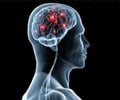Researchers have identified an area of the brain, called the CA1 subfield, which is involved in the earliest stages of schizophrenia and related psychotic disorders.
Researchers have identified an area of the brain, called the CA1 subfield, which is involved in the earliest stages of schizophrenia and related psychotic disorders.
This is a first of its kind functional magnetic resonance imaging (fMRI) study, done by researchers at Columbia University The researchers claim that activity in the CA1 subfield of the hippocampus may help predict the onset of the disease, offering opportunities for earlier diagnosis and for the development of drugs for schizophrenia prevention.In the study, the researchers scanned the brains of 18 high-risk individuals with "prodromal" symptoms, and followed them for two years.
Among the individuals who went on to develop first-episode psychotic disorders like schizophrenia, 70 percent had unusually high activity in the CA1 subfield.
The study has shown that in the early stages of chronic schizophrenia, before symptoms are fully manifest, this increased activity is evident only in this one subregion and can distinguish who among high-risk individuals will go on to develop these disorders.
Mapping cerebral blood volume (CBV) is a method used in fMRI to measure this activity and it indicates increases or decreases in metabolism.
The researchers used a novel high-resolution application of fMRI, pioneered by lead study investigator Dr. Scott A. Small, and first compared 18 patients with schizophrenia to 18 healthy controls and observed abnormalities in multiple areas of the brains of the patients with schizophrenia.
Advertisement
"By applying this imaging technology to a population of high-risk individuals, we wanted to see if we could find an area of the brain that is selectively targeted. In comparing those high-risk individuals who developed psychosis with those who did not, we found that only the CA1 subfield was abnormal in those young people who went on to develop schizophrenia. We believe that this may give us an early snapshot of disease," said first author Dr. Scott A. Schobel.
Advertisement
He added: "Our findings could help us improve diagnosis in the preclinical stage, which is most important because it is this stage of the disease that will be most amenable to treatment."
The findings of the study have been detailed in the Archives of General Psychiatry.
Source-ANI
ARU













